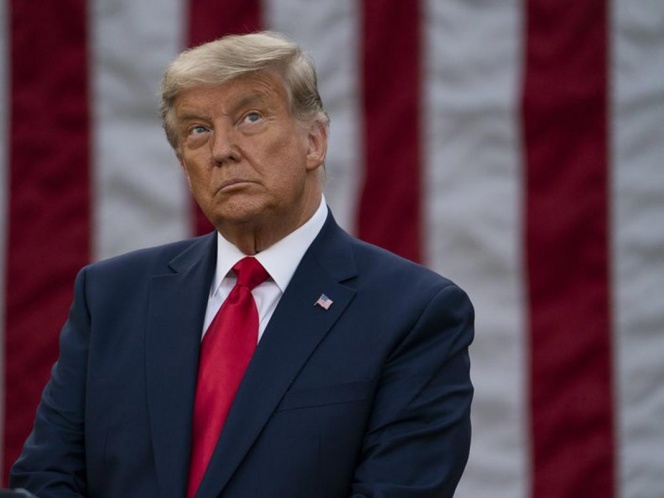The January 6th resurrection at the United States Capitol was an extremely abrasive event that had the potential to be an explosively abrasive event. If the people trespassing in the Capitol had succeeded in taking it over, it could have led to the death of the United States as we know it, one of the leading countries ruled by a democratic government in the world. Like other events, it had a defined, discrete beginning, middle and end. Having such strong temporal boundaries magnified considerably the experience of the insurrection. What better way to pull out of a nebulous ghostly miasma of numbness than with something with sharp edges, that if allowed to open up its borders, as it were, would have totally upended American society and changed its parameters forevermore.
Here was Trump guiding members of his cult-like numb zombies to collectively break out of the formless ethereal experiential vacuum into an abrasive overstimulating tension-pocket that for a few short hours allowed them to feel very much alive. Paradoxically, who knows if they had actually succeeded in preventing the counting of the electoral votes and in overthrowing the government, if all these people, who were suffering the effects of all the frictionless mediated experiences of modern technological society could have effectively sustained their actions of insurrection or if the overstimulating effects of Trump’s revolution would have forced them to voluntarily find a way of defeating their own revolution within themselves and to return to a state of numbness. Maybe, many of them felt an unconscious sense of relief that the insurrection didn’t succeed.
Here we are dealing not just with typical motives for a surging expression of violence. Motives that involve righting wrongs or satisfying greed or desires for power. These motives like all motives are focused and consciously directed. But contrary to modern perception, motives are not the only causes that move human action forward. Many causes are created by the environments in which people live today. Do zombies have coherent motivation to create certain actions at the moment of their choosing? Or are they so numb that they need certain situations that generate opportunities that act as triggers for certain kinds of reactions. They are like arbitrary random reactions that occur because people today are desperate to pull out of their numbness. And something like an insurrection fills the bill as a good trigger to pull a person out of an experiential vacuum.
One might ask how many of Trump’s followers really understand what Trump stands for? Does Trump fully understand what he stands for? Does the motive really matter if the dominant cause is numbness? What does matter is that Trump knows how to shake his followers up with his unpredictable bellicose stances. It is not so much a matter of coherent motivations, but rather random triggers. The randomness of the trigger makes it even more exciting and more stimulating, more effective in lifting a person out of his numbness.
But a movement like that of Trump, however chaotic it may seem in some ways, is in itself almost too coherent to represent that which I am really trying to get to. Stephen Paddock acted alone in massacring 60 people and wounding at least 413 in Las Vegas, Nevada. From his 32nd floor suites in the Mandalay Bay Hotel, he shot down at people who were attending a music festival and fired more than 1000 bullets in the process. In the end, he was found dead in his hotel room after having committed suicide. The number of wounded rose to 867 as people started to panic after the shooting. The most important fact for our purposes is that after an investigation was carried out regarding Paddock’s motivation for the massacre, it was concluded by the authorities that the motive was officially undetermined.
But motive and cause are not the same thing. Something triggered in Paddock’s numb mind to go for the ultimate numbness breaker: murder and then suicide. As has been pointed out before, suicide is the ultimate tension-pocket stimulus to pull a person out of the experiential vacuum and numbness. In the preparation for it, even if it’s only a few minutes, even if it’s only a few seconds, the suicide victim experiences an abrasive stimulus like no other, the panic of the transition to the no-stimulation. It is like the orgasm of death. And who knows what triggers it when it happens.
Trump, with his authoritarian personality may think he is in control of the situations he seems to create. But perhaps he, just like his cultish followers, is subject to the vagaries of random triggers from the experiential vacuum. Trump seems to be in control of the surface of things, but underneath he is tossed and turned by random triggers, random events over which he has little or no control. This kind of situation is what happens in an experiential vacuum. Everybody seems to lose control. And it is why there will be new Jan.6 resurrections to pull people out of numbness in the future led, of course, by future Trumps searching for new abrasive solutions to their problems.


























